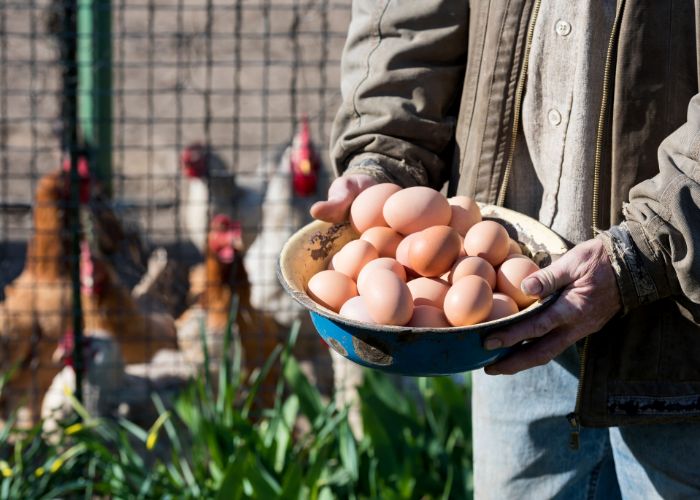MADRID – The difference in the price for basic products that supermarkets in Spain pay to farmers and the consumer price has increased on an annual basis for some products up to 10 times more than the consumer price index (CPI).
That price difference has even increased by more than 65% for eggs, more than 20% for potatoes and tomatoes and 16% for lettuce, onions and milk. This is compared to an overall CPI of 5.7%.
Andrés Góngora of the agricultural organisation COAG would like to explain how food prices are determined, he says in El Publico. “When supermarkets say they don’t apply illegal margins, it is assumed that it is because all the price increases that farmers pass on are their costs.” According to Góngora, the information about how prices are determined is not transparent.
According to him, something is wrong because many producers of commodities generally have their prices below last year’s level. With exceptions such as citrus fruits. Nevertheless, prices for the end consumer are rising.
Data from the IPOD (Origin Destination Price Index), prepared by COAG, shows that margins are growing faster than headline inflation, which ended 2022 at 5.7%. Inflation for foodstuffs, however, nearly tripled: 15.7%.
COAG’s analysis reveals that in the case of eggs, the price difference between the field and the refrigerator has grown by 66% in December 2022 compared to the same month in 2021. Eggplants grew by 60%. In both cases, that’s more than ten times the increase in the general CPI.
For basic foods such as potatoes, tomatoes, onions or milk, the difference fluctuated between 16.6% and 23%, while the share for chicken and Swiss chard doubled, with more than 12% in both cases.
Also products with smaller margins than last year
At the same time, the margins of other food products that have become significantly more expensive at the base were lower than last year. This was the case with olive oil (poor harvest due to drought), oranges (often sold below cost price) or pork. Of these, the Ministry of Agriculture estimates a 60% increase in value in the last twelve months following tensions caused by the fall in exports, mainly those directed to China.
Cost increase at the origin
It is common in Spain for fresh food prices to increase by four to five times between the place of production and consumption. But now costs are also rising at the origin. The Observatory of Prices and Markets of the Junta de Andalucía gives some indications about the composition of the final selling price.
For example, a farmer received 96 cents for a kilo of tomatoes last week. At the first auction, 14 cents were already added. Another 60 cents were added to the wholesale market, bringing them to €1.70 per kilo. This amount was doubled to arrive at the consumer price of a well-known supermarket chain. At which point it was between €3.90 and €5.68 per kilo.
Facua demands an official study on how food prices come about
“There is no doubt that some outlets increase margins without increasing prices for growers. The same goes for the distributors and the big chains, or both, who do it,” explains Rubén Sánchez. He is the spokesperson for the consumer association Facua. This entity has demanded an official study from the government on the process of food price formation.
Sánchez favours price intervention and margins for food marketing. These are also advocated by political parties such as Podemos, IU or CCOO. He notes that the sales prices of many products are rising sharply, without the producers noticing anything in their income.
Food prices have risen 20% in two years
The CPI data points to a slowdown in the rise in unprocessed (fresh) food prices. However, this delay is not seen in foods that require any kind of processing. In any case, the context is one of an overall increase in food prices in 2022 which is between 11.4% and 19.2 %, depending on the food group. The price of the entire shopping basket has tripled (14.7%) year-over-year. This increase took place after a year when the shopping basket has already become more expensive by 5% in 2021. Consequently, that puts the price increase for the last two years at 20%.
VAT reduction on basic products
On Tuesday, parliament approved the decree setting the VAT reduction for a basket of basic products. This is one of the measures taken by the government to break the spiral of price increases. However, several organisations have identified shortcomings in supermarkets’ compliance with the measure.
Consumer organisation OCU criticises the fact that meat or fish are not covered by the measure. Those products form an “important weight” in the shopping basket.
Related post: To what extent are Spanish supermarkets complying with the VAT reduction


